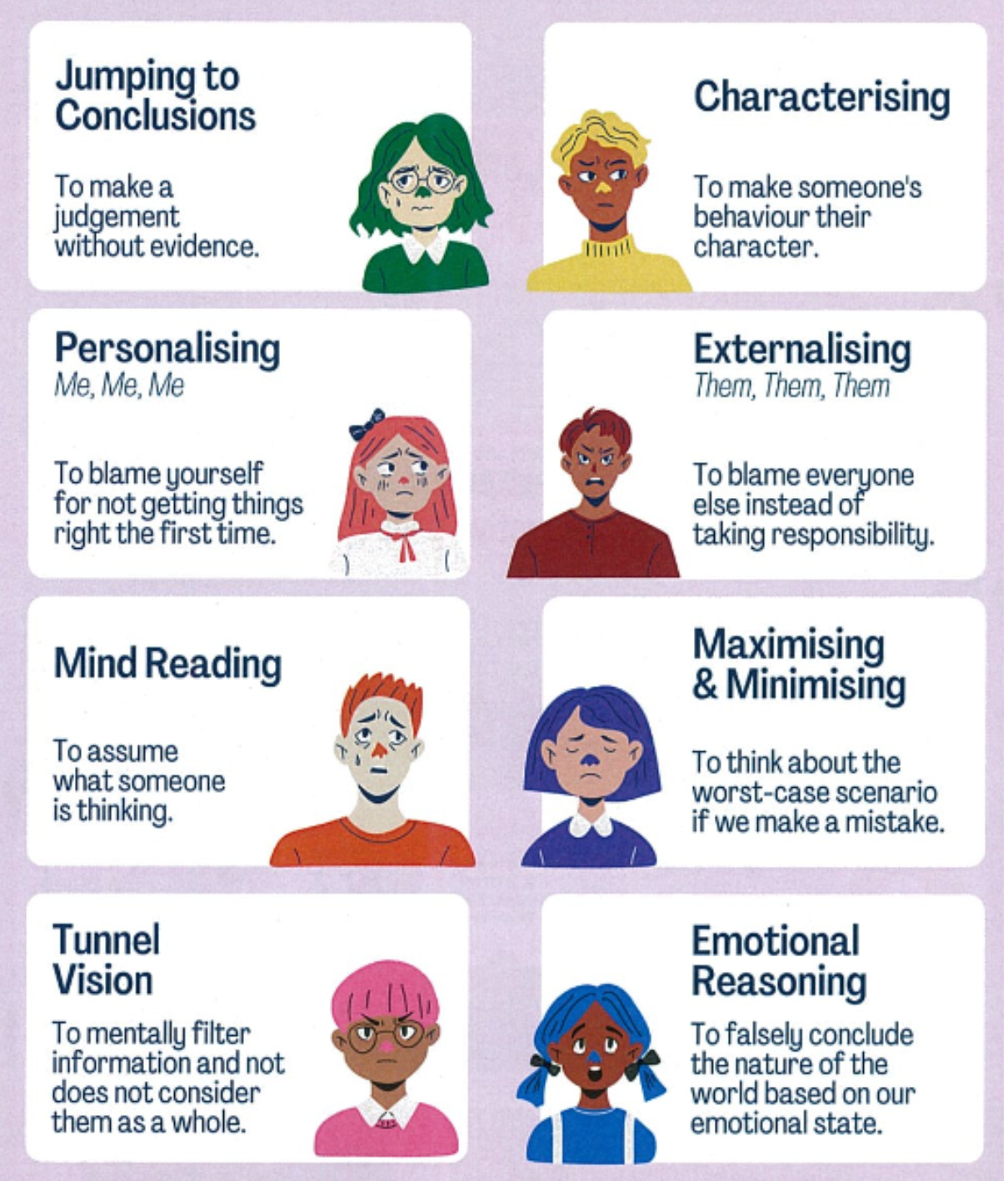Mind Games: Recognizing and Reframing Thinking Traps
“It is not the things themselves that disturb us, but the views we take of them.” — Epictetus
As part of the wellbeing program I facilitated during a 1 year stay in Sweden, I ask the team to have a dialogue on common deceptions our own minds play on us. We discussed some narratives to reflect together what possible ‘thinking traps’ can be observed from the fictional stories.
Light-speed Thinking: Jane warping into a black hole
Once upon a time, in a bustling office, a talented team worked tirelessly on a high-stakes project. Among them was Jane, a diligent project manager who took pride in her role. One afternoon, an email from her colleague Mark landed in her inbox with a simple subject line: “Need to talk.” Immediately, a wave of anxiety washed over her. Jane jumped to conclusions, assuming the worst—perhaps the project was failing, or Mark was dissatisfied. Her mind spiraled as she prepared for an imagined disaster. When she finally met with Mark, it turned out he only needed a quick clarification on a minor project detail.
This story illustrates a classic “thinking trap” known as catastrophizing. Jane’s immediate assumption of the worst led to undue stress. If she had paused and taken a moment to question her initial reaction, she could have saved herself from a storm of unnecessary worry.
Thinking traps are cognitive shortcuts that often lead us into poor decisions and misunderstandings. They’re subtle, sneaky, and can have real consequences for our well-being and productivity. Let’s explore some common thinking traps with stories that show the value of pausing to question our assumptions.
The Perils of Assumptions: The Tale of Amy and Mark
In another part of the office, Mark often worked with Amy, a quiet but insightful colleague. Over time, Mark developed an impression that Amy didn’t contribute much to the team. She rarely spoke up during meetings, and Mark interpreted her silence as incompetence. He found himself discounting her ideas and not inviting her to key discussions.
One day, during a brainstorming session, Amy finally spoke up, offering a well-thought-out perspective that transformed the project’s direction. Mark was taken aback by the depth of her insights. This was his wake-up call—he had fallen into the confirmation bias trap, where he focused only on information that confirmed his existing beliefs. Mark realized he had unfairly judged Amy based on her quiet demeanor rather than her capabilities.
This story shows how assumptions can distort our perceptions. By taking a moment to notice and question our judgments, we can open ourselves to new perspectives and prevent misunderstandings.
Fear of Failure: Emily’s Journey with Feedback
Emily, a rising star in the office, recently presented a proposal she had been working on for weeks. Following her presentation, her manager provided constructive feedback, noting areas for improvement. Emily felt crushed. Her mind latched onto the criticism, twisting it into a narrative that she was incompetent and that her career was doomed. She began to question her abilities and worth, a classic example of the all-or-nothing thinking trap.
Fortunately, her mentor, noticing her distress, encouraged Emily to reframe her thoughts. Rather than seeing the feedback as a verdict on her abilities, she learned to view it as a valuable tool for growth. This shift helped her regain confidence and appreciate constructive criticism. Emily’s experience highlights the importance of separating emotions from rational analysis, fostering resilience in the face of setbacks.
Narrow Focus: Jake’s Sales Goal Dilemma
Jake, a marketing manager, was laser-focused on hitting his team’s monthly sales targets. He poured all his energy into meeting short-term goals, often at the expense of long-term brand strategy. Despite his team’s suggestions to think beyond immediate sales figures, Jake stayed fixated on short-term gains.
One day, a senior colleague pointed out how Jake’s narrow approach could jeopardize the brand’s future. This conversation shifted Jake’s perspective. He realized he had fallen into a tunnel vision trap, where his focus on one outcome blinded him to the bigger picture. By stepping back, Jake was able to balance his goals and make choices that benefited both the brand and his team’s long-term growth.
Meandrousity
These stories show us how quickly thinking traps can skew our perceptions and lead to poor outcomes. Here’s a simple practice to catch and counter these traps before they gain power over our emotions and decisions:
1. Pause and Observe: When a challenging situation arises, take a moment to pause and notice your initial reactions. Are you making assumptions or jumping to conclusions?
2. Question Your Beliefs: Ask yourself if your reaction is based on facts or on assumptions. What evidence do you have? Could there be other explanations?
3. Reframe and Choose: Once you’ve identified a thinking trap, reframe your perspective. Try to see the situation in a balanced way and choose a response that aligns with the bigger picture.
“Your assumptions are your windows on the world. Scrub them off every once in a while, or the light won’t come in.” — Isaac Asimov
In a world that often pushes us to act quickly, a small pause can go a long way in helping us break free from thinking traps. As we cultivate this awareness, we can navigate challenges with a clearer mind and a kinder approach toward ourselves and others.





